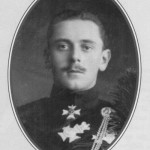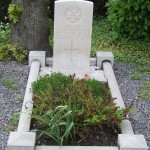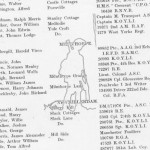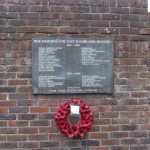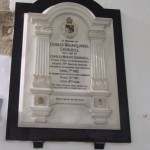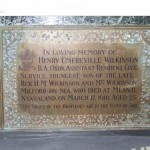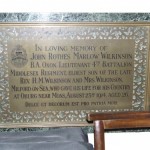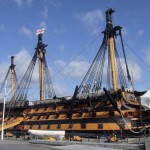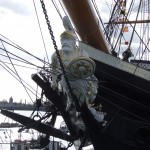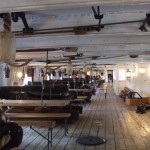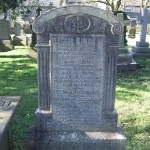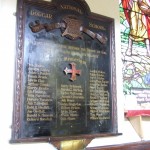Been thinking what to do a blog about – you know something interesting and informative hopefully. So clicked on to Ancestry 1901 census and thought who can I find that has an unusual tale to tell. Not watching where I was typing I entered Wakefield and then enter. What a surprise, I had entered Wakefield in the first name, or as I know it, Christian name and 47 entries greeted me – some were only a middle name, derived from a relatives surname perhaps, but there were about 10 who had been given it as a first name – why? Did they have a link to the town or to someone whose surname was Wakefield?
Who shall I pick on to open up all their secrets ? Wakefield Arthur sounds interesting and he was also first in the list. He was born in 1862 in Plymouth – old enough to have a couple of census to delve through and also young enough so that his parents can be traced. But I am afraid my enthusiasm regarding Arthur was soon drenched like a good summer. The 1901 census entry for Wakefield was clicked on and the entry for him and his family was about half way down – my eyes fell on Wakefield Arthur aged 39, the entry for his wife told the whole sad story – she was Blanche Wakefield – the enumerator had taken down the name incorrectly or Arthur had given his surname first, as you sometimes do on documents. I’ll try another Wakefield.
No names stand out in the 1901 so switched to 1911 instead and found a gentleman aged 52 and born in Yorkshire. Who is he ? Wakefield Duncan Crigan is his name. He was born in 1859 in Sleights, near Whitby and was living on Private Means with his family and servants at Dainton, 9 Upper Park Road, Bromley, Kent. The family consisted of Wakefield, his brothers Hugh Alexander Crigon aged 49 and Charles Clandin Crigan aged 42 and their sisters Julia Smelt Crigan aged 55 and Caroline Ann Crigan aged 45 all were born in Sleights and all, like Wakefield, were living on Private Means. The entry for Wakefield also states he was married, had been for 18 years and had had one child – the enumerator had struck through this as it was normally the woman who entered the information regarding children, but good old Wakefield for letting us know – but who and were is his wife.
The 1901 census draws a blank on a quick search for Wakefield, but the 1891 finds him with his parents, Charles Crigan aged 63 a retired military officer born in Marston and Jane aged 62 born in Whitby – all the children previously mentioned are there plus others :- Julie, Wakefield entered as Duncan, John, Hugh and Caroline all aged between 23 – 32 and all single.
The 1881 census with a quick search also reveals nothing but the 1871 tells that aged 44 Charles had retired from his military service and was living at Carr View House in Eskdale with his wife Jane and the following children :- Mary Dora 20, Elizabeth 18, Julia 14, W Duncan 12, John 10, Alexander 9. Hamilton 8, Caroline 5, Charlotte 3 and Charles 2. The places of birth for the eldest two children is Newingden ? and Whitby, while the younger children are all Sleights.
Back a further 10 years to 1861 and Charles with his family are still in Eskdale and aged 34 Charles is a Retired Military Officer – how long was he in the army ? A search of Army Officers books tells that there have been Crigan high ranking officers serving the country since the late 1700’s and does our Charles belong to this family? But back to 1861 and the family is now consisting of :- Elizabeth 9, Shell ? 8, Jane 7, Julia 4, Janetta C 3, Wakefield D 2 and Joshua 1 + plus servants including a nursery governess, nursery maid, housemaid and cook.
1851 can’t find an entry for Charles or Jane with a few variations used in the search.
Charles Alexander Robert Crigan married Jane Chapman in the June Qtr of 1850 in the Whitby Registration District.
Back to Wakefield and who was his wife ? There is an entry in Freebmd for a Wakefield Duncan Crigan marrying in the September Qtr of 1893 (which ties up with him saying he had been married 18 years) in the Kensington Registration District but there is a choice of ladies to match him to – Mary Henrietta G Kell or Emily Tappin ?
Jumping into 1900, Charles Alexander Robert Crigan or Dainton, Upper Park Road, Bromley, Kent a retired captain in HM Madras Native-infantry died on 2 Ocdrtober 1900, Administrations London 27 October to Wakefield Duncan Crigan accountant, effects £553 2s 1d.
Jumping into the next decade Wakefield Duncan Crigan of Trefusis, Summerdown Road, Eastbourne died 5 May 1912. Probate London 23 May to Mary Henrietta Gertrude Crigan, widow and Edgar Armstrong Everington, solicitor. Effects £12740 7s 10d. Question, one being answered this time, which makes a change, he married Mary Henrietta G Kell, but where was she in the 1911 census and was the child with her? Found her !! M H Gertrude Crigan aged 43 and born in Bradford was living with her 16 year old daughter Catherine E and two servants at Trefusis, Summerdown Road, Eastbourne living on private means. Mary completes her form stating she has been married 17 years. But why is Wakefield, head of household living with his siblings?
Mary Henrietta Gertrude Crigan of 50 Sandford Road, Bromley, Kent died in Stoneleigh Cottage, Garpole, nr Leominster on 28 January 1942 aged 74. Probate Llandudno 3 April to Basil Stuart Hudson, M.C. Captain H M Army and Catherine Elizabeth Hudson (wife of the said Basil Stuart Hudson M.C.). Effects £2239 16s 11d. Mary’s daughter Catherine had married Basil in the March Quarter of 1926 in Bromley.
Basil Stuart Hudson M.C. served as an Officer in WW1, his medal card tells that he was a 2nd Lieutenant in the R.F.A. and in addition to the M.C. he was awarded the Victory and British Medals. He served in France and applied for his medals in 1923, being sent to James Hudson, Esq., ‘Terracina’ 8 Garden Road, Bromley, Kent.
I don’t seem to have answered by initial question – Why was Wakefield called Wakefield, but I do seem to have found a family with what could turn out to be an interesting story – let me know if you are related.
Sources :- Ancestry, Freebmd,
